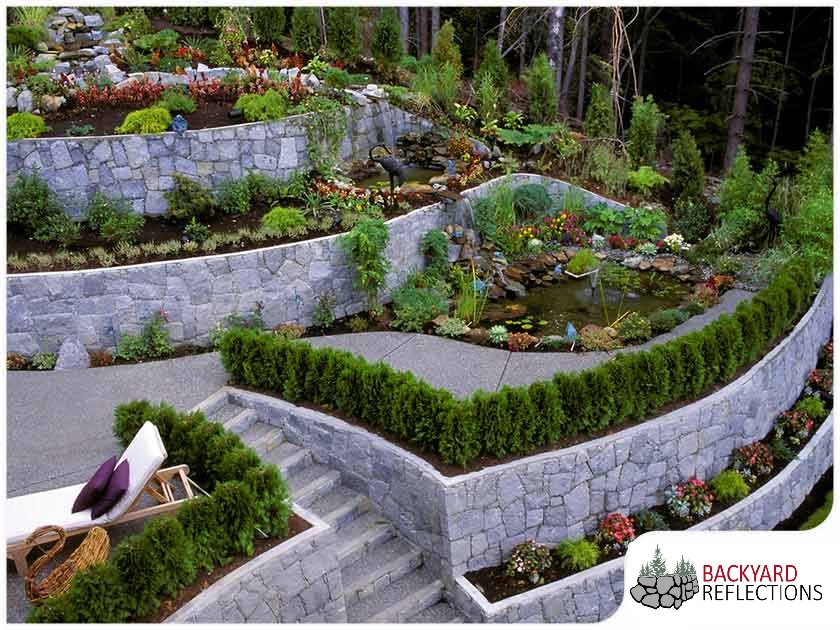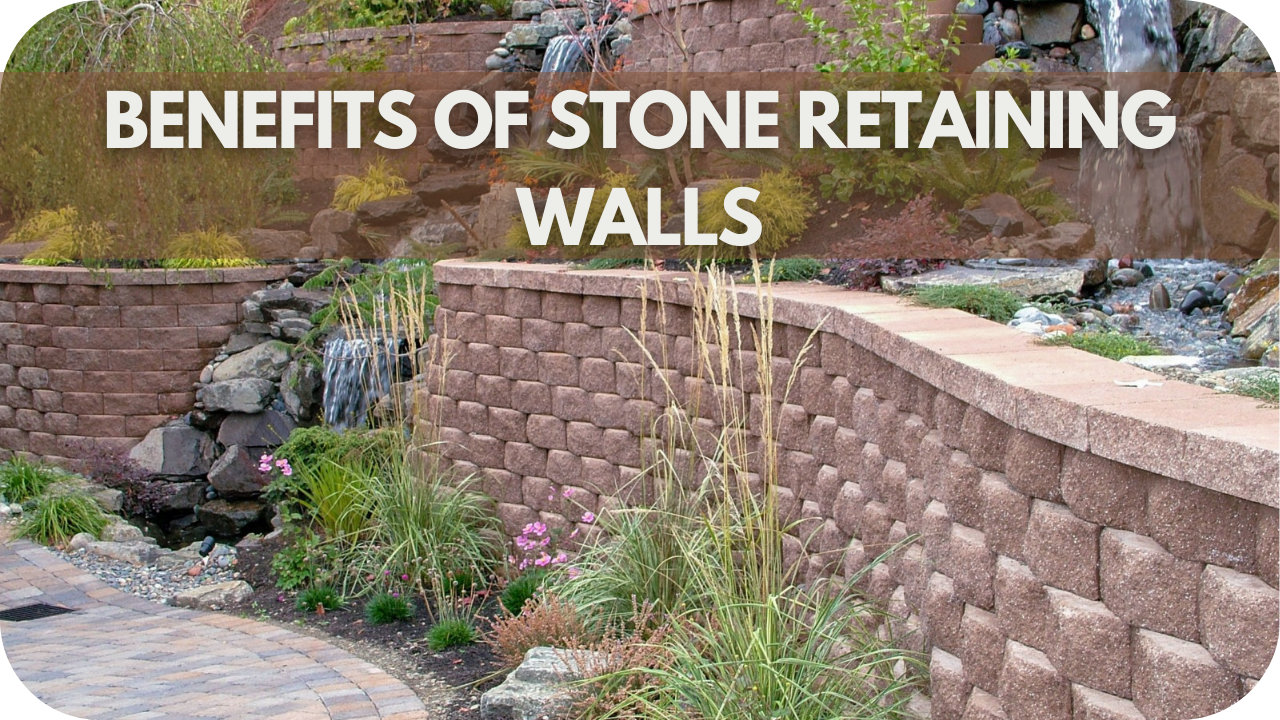Secret Considerations for Building Efficient Retaining Walls in Your Lawn
When you're taking into consideration building a keeping wall in your yard, it's important to consider several vital factors. The wall's function, the products you'll utilize, and the details soil conditions can all affect its performance and long life. You'll likewise require to browse neighborhood building regulations and prepare for correct water drainage. Yet exactly how do you ensure your layout not just meets these requirements however likewise improves your landscape? Let's check out the vital steps with each other.
Recognizing the Objective of Your Retaining Wall
When you consider developing a keeping wall surface, consider its major objective: maintaining dirt and preventing disintegration. Retaining walls give vital assistance for sloped landscapes, aiding to preserve dirt integrity. You'll discover they're crucial in locations where water runoff may or else remove soil, bring about expensive fixings and landscape damage.
By keeping back earth, these walls create degree surface areas for yards, patio areas, or paths. This not only improves your lawn's appearances yet also promotes far better drain, lowering water pooling in undesirable areas. If you're dealing with high inclines, a well-constructed retaining wall surface can prevent landslides, ensuring security for you and your property.
Ultimately, understanding the objective of your retaining wall surface will certainly assist your layout choices and assist you develop a useful, long lasting structure that fulfills your demands. Take a moment to evaluate your landscape; it'll pay off in the long run.
Picking the Right Materials
When choosing products for your retaining wall surface, you'll want to think about durability, appearances, and expense. Each aspect plays a necessary duty in ensuring your wall stands the examination of time while looking terrific and fitting your budget plan. Let's explore exactly how to make the most effective options for your job.
Product Resilience Aspects
Selecting the right materials is important for the long life and effectiveness of your retaining wall, since their resilience directly impacts the wall's capability to stand up to ecological stress and anxieties. Start by considering your neighborhood climate; products like concrete and stone resist dampness and temperature fluctuations well. If you reside in an area susceptible to heavy rains, choose products with good drainage buildings, like gravel or porous blocks, to stop water buildup.
Additionally, assume regarding the soil problems on your property. Some products execute better in certain soil kinds, so it's essential to match them appropriately. Lastly, recognize prospective wear from bugs or erosion. Choosing resilient products warranties your retaining wall stands strong, shielding your backyard for many years ahead.
Visual Design Options
Long lasting products not just assure your retaining wall surface's structural integrity yet also play an essential function in its aesthetic charm. When choosing the best materials, consider how they match your landscape. All-natural rock offers a timeless, rustic appearance, while concrete blocks can supply a sleek, modern finish. You could likewise take into consideration making use of timber for a cozy, organic feeling. Shade and appearance issue, too; pick shades that balance with your home and garden. Don't fail to remember about the wall surface's shape-- bent walls can produce a softer appearance, while straight lines can really feel extra structured. By very carefully choosing products that align with your aesthetic vision, you'll enhance your exterior space while ensuring your wall stands solid versus the aspects.
Cost-Effectiveness Evaluation
Choosing the best materials for your retaining wall surface isn't simply about appearances; it's additionally essential for your budget plan. When selecting products, think about both upfront costs and lasting longevity.
Don't forget to element in upkeep prices. Some materials, like natural rock, can include elegance and need much less maintenance, while others might require normal therapies
Eventually, evaluate the benefits and drawbacks of each alternative against your budget plan and the wall surface's intended function. Investing intelligently in materials currently can prevent costly issues down the roadway. Select materials that balance price and performance properly.
Examining Soil Conditions and Water Drainage
As you begin your task, evaluating dirt conditions and drain is vital for the success of your retaining wall surface. Start by taking a look at the sort of dirt in your yard. Sandy dirt drains pipes well but lacks security, while clay dirt can maintain moisture, causing push on your wall. Evaluate the soil's moisture content by digging a small hole and observing how swiftly it dries.
Following, evaluate the slope of your backyard. If water naturally streams toward your wall surface, you'll need to execute a water drainage remedy to stop disintegration and pressure accumulation. Think about setting up perforated pipelines or gravel backfill behind the wall surface to promote drainage.
Last but not least, observe any type of neighboring trees or vegetation; their origins can influence soil security. By understanding your dirt problems and implementing proper drain, you'll develop a strong structure for your retaining wall that stands the test of time.
Adhering To Local Building Codes
Before you start constructing your retaining wall surface, you require to study local regulations to guarantee conformity. It's necessary to recognize what allows you have to obtain, as this can save you from pricey penalties or needing to redesign your work. Taking these actions seriously will assist you develop a safe and efficient framework.
Study Local Laws
Comprehending local policies is vital when planning your retaining wall project, especially given that building codes can vary significantly by area. Look for guidelines on wall elevation, products, drain systems, and architectural stability. By doing your research upfront, you can ensure your retaining wall meets all necessary codes and blends seamlessly into your this link backyard.
Get Required Authorizations
When you have actually researched regional regulations, the following step is to get the necessary licenses for your retaining wall surface project. This process warranties your wall conforms with building ordinance and safety and security requirements. Connect to your regional building authority to discover what permits you require. They may call for certain plans or design evaluations, especially for larger walls. Be prepared to send in-depth drawings, consisting of measurements and products. Do not neglect to inspect if your task influences drain or surrounding residential properties, as these variables could require additional licenses. Safeguarding the appropriate authorizations can conserve you from costly penalties or needing to dismantle your wall later. Bear in mind, adhering to the guidelines currently will result in a smoother building and construction experience.

Preparation the Design and Visual Appeal
As you begin planning the design and aesthetic appeals of your retaining wall, consider how it will certainly balance with the surrounding landscape. Consider the materials you'll make use of-- rock, block, or concrete-- and just how they'll match your home's design and the natural environments in your yard. Choose shades and textures that blend effortlessly with existing attributes like patio areas, pathways, or gardens.
Following, imagine the wall surface's shape and elevation. Curved walls can soften a stiff landscape, while straight lines might share an extra modern-day look. Do not forget to integrate plants and plant around the wall surface for an all-natural touch; this can enhance its allure and incorporate it into the environment.
Last but not least, bear in mind capability. Your design should not only be aesthetically pleasing however additionally offer its purpose properly. By attentively planning these components, you'll produce a retaining wall surface that improves your yard's elegance while fulfilling its architectural duty.
Calculating Elevation and Thickness Demands
To construct a strong retaining wall surface, you require to precisely determine its height and density requirements based on the soil conditions and the height of the incline it will sustain. Start by assessing useful link the incline's angle and the sort of dirt, as various dirts apply differing quantities of pressure.
For walls over four feet high, think about a thickness of a minimum of 12 inches. If the wall is taller, enhance the density proportionally to maintain security.
Following, calculate the elevation of the wall surface by measuring the vertical distance it needs to preserve. For every foot of height, you need to commonly plan for a density of one-third of the wall surface's height.
Constantly bear in mind to make up additional factors like water drainage and backfill, which can influence your wall's design. Appropriate calculations now ensure your retaining wall surface stands solid and lasts for years to find.
Upkeep and Long Life Considerations
While maintaining your retaining wall might appear like a low top priority, ignoring it can bring about substantial issues with time. Regular examinations are crucial; look for cracks, protrudes, or any kind of indications of water damages. Resolving these problems early can conserve you from pricey fixings down the road.
Maintain an eye on drain systems, as well. Clogged drains pipes can cause water to build up, applying why not try here pressure on your wall and compromising its stability. Clear particles and guarantee proper flow to maintain durability.
You may likewise want to reflect on sealing your wall to secure it from moisture and weathering. Depending on the material, this might require reapplication every couple of years.
Lastly, landscaping around your wall surface can support its stability. Stay clear of growing huge trees nearby, as their origins can undermine the structure. With aggressive maintenance, your retaining wall surface can offer you well for years to come.

Regularly Asked Questions
Can I Develop a Retaining Wall by Myself, or Should I Hire a Professional?
You can absolutely develop a keeping wall on your own if you have the right devices and understanding. Hiring a specialist assurances it's done correctly, specifically for larger or even more intricate structures. Consider your ability degree prior to deciding.
What Are one of the most Typical Blunders Made When Structure Retaining Walls?
When building retaining walls, you could overlook correct drain, miss making use of the best products, or overlook reinforcement. These typical mistakes can bring about architectural failing, so take your time and plan thoroughly to avoid problems.
Exactly how Do I Know if My Retaining Wall Needs Support?
You'll understand your retaining wall requires support if you notice fractures, leaning, or bulging. Check for water pooling behind it or dirt erosion near the base. Address these indications without delay to avoid more damages.
What Plant kingdom Are Ideal for Landscaping Around a Retaining Wall?
When landscaping around a keeping wall, think about utilizing low-maintenance plants like succulents, decorative turfs, or creeping ground covers - OKC Precision Retaining Walls. They'll prosper in those problems and add beauty while preventing dirt erosion around your wall
Just How Can I Protect Against Disintegration Around My Retaining Wall?
To stop disintegration around your retaining wall, you can grow ground cover, use mulch, and mount drainage systems. Frequently look for water buildup and adjust landscape design to redirect runoff away from the wall.